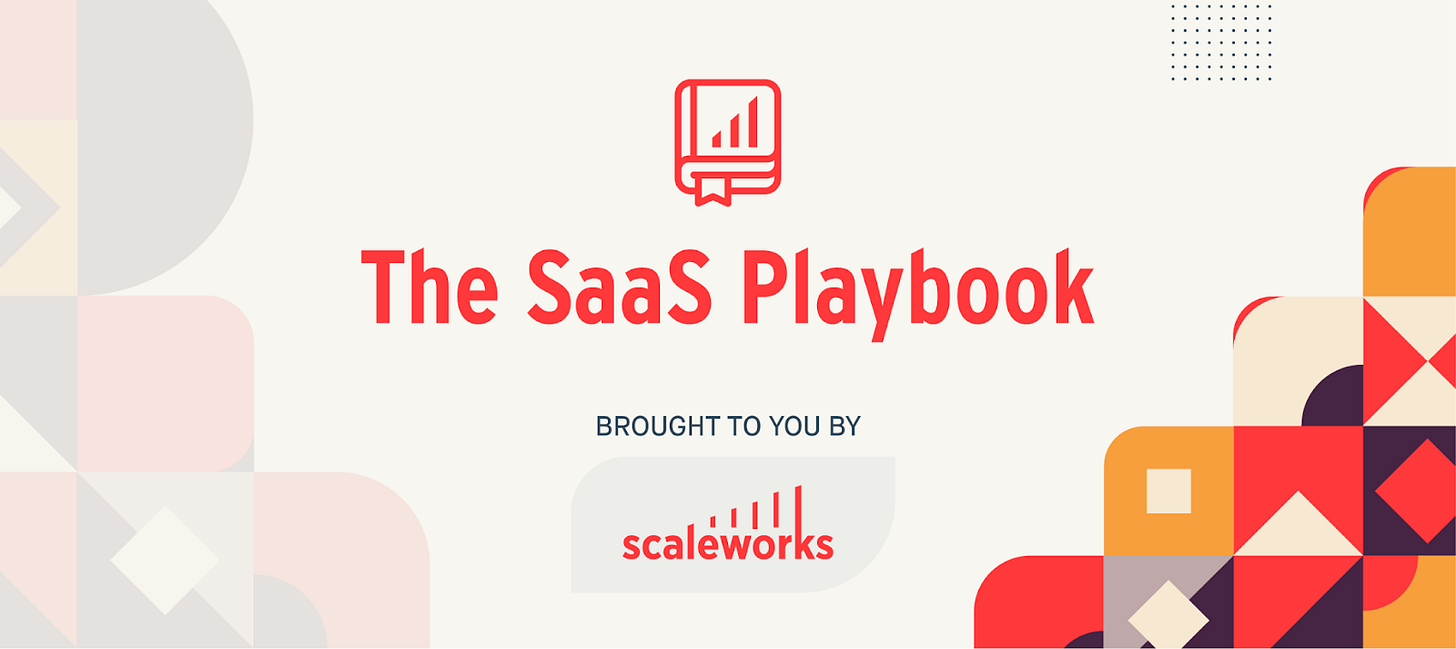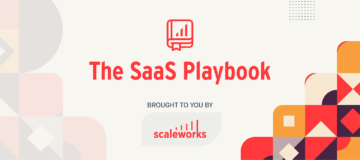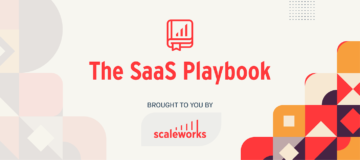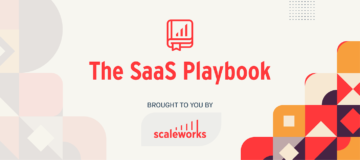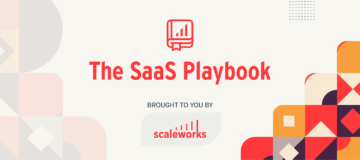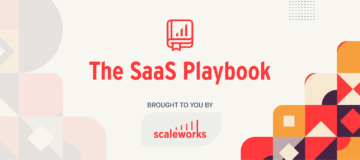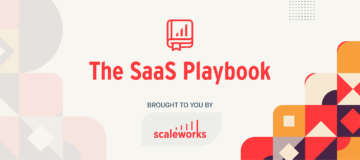Welcome back to The SaaS Playbook, a bi-weekly rundown of the top articles, tactics, and thought leadership in B2B SaaS. Not a subscriber yet?
🥰 Private Equity is smitten with B2B enterprise software, and there are plenty of reasons why. These tools are often mission critical with high switching costs (and in turn, great retention profiles), large ARPUs, and strong upsell potential. So why isn’t every SMB or Mid-Market founder dropping their project to work on something serving the enterprise? Well, as Axuall CEO Charlie Lougheed explains in this piece, it’s an uphill battle to break into the enterprise. One reason is that enterprise companies are more calculated buyers who need to know exactly what category of need your product meets, and if they have a tool which even partially solves that need, it’s hard to get them off of it. Category design and creating your own unique space which the buyer should be solving for (read Play Bigger for more on how to do this) can be an effective way to get yourself a seat at the table.
⚖️ At Scaleworks we often get asked which metrics we use to value companies, and our list contains a lot of the usual suspects: growth, scale, retention, profitability, gross margin, etc.. At the end of the day, and as Alex Oppenheimer of Verissimo Ventures points out, the one thing that makes a business valuable is its ability to generate cash flow with a high degree of certainty, hopefully for a long time. The metrics previously listed all play a part in answering that question, and they are driven by the characteristics of a company’s product and target customers. The linked blog does a great comparison of two companies (Crowdstrike and Toast) with similar revenues and growth rates, but vastly different valuations stemming from those characteristics.
📊 SaaS founders with a couple years at their current company likely have enough data to track metrics which can refine their decision making. That should include cohort analysis, which is the best way to track the behavior of your users over time. But not all cohorts are created equal – there are a few things you need to look out for when putting together your analysis to make sure you are getting the full picture. For example, most companies begin measuring the cohort of a customer the month they join, when in many cases, the customer’s revenue will not be ramped up and stable for a couple of months. Taking those first two months out of the equation will give you a better read on your net retention and present more honest data.
🎧 Earlier this week, Vista Equity Founder and CEO Robert Smith joined Patrick O’Shaughnessy on Invest Like The Best to discuss Vista’s continued success investing in enterprise software and where he sees the market going. While there’s no question the amount of competition in software has grown exponentially over the last decade, Smith believes we are in the early innings of the enterprise software game. Only recently have companies begun to effectively leverage AI and ML to make their tools predictive and consultative (rather than just automating and reporting), paving the way to a new breed of software with higher ROI for customers. And even then, most who say they have AI/ML today have what we would call “aspirational AI”. Smith also opens up on the metrics Vista uses to dictate valuation and how they have evolved over the software market’s hot (and recently cooled) last couple of years.
As always, if you or someone you know is considering selling, taking investment, or even looking for a bit of debt we might be able to help out. Just reply to this thread and we can get acquainted. We may or may not be a perfect fit, but we’re always up for meeting SaaS founders and extending our network where helpful.
- SEO Powered Content & PR Distribution. Get Amplified Today.
- Platoblockchain. Web3 Metaverse Intelligence. Knowledge Amplified. Access Here.
- Source: https://thesaasplaybook.substack.com/p/-private-equitys-love-for-enterprise
- 10
- 9
- a
- ability
- Able
- acquainted
- AI
- AI/ML
- alex
- All
- always
- Amazon
- amount
- analysis
- and
- Apple
- articles
- automating
- B2B
- back
- Battle
- believes
- BEST
- Better
- bigger
- Bit
- Blog
- Break
- BREED
- business
- button
- buyers
- calculated
- call
- Can Get
- cases
- Cash
- cash flow
- Category
- ceo
- certainty
- characteristics
- Charlie
- Cohort
- COM
- Companies
- company
- Company’s
- comparison
- competition
- considering
- contains
- continued
- Costs
- Couple
- created
- Creating
- critical
- Current
- customer
- Customers
- data
- day
- Debt
- decade
- decision
- Decision Making
- Degree
- Design
- different
- driven
- Dropping
- Earlier
- Early
- Effective
- effectively
- enough
- Enterprise
- enterprise software
- equity
- etc
- Even
- evolved
- exactly
- example
- exponentially
- extending
- few
- First
- fit
- flow
- founder
- founders
- from
- full
- game
- generate
- get
- getting
- Give
- good
- great
- gross
- grown
- Growth
- Hard
- help
- helpful
- High
- higher
- Hopefully
- HOT
- How
- How To
- HTTPS
- in
- include
- Invest
- investing
- investment
- IT
- join
- joined
- Know
- large
- Last
- Leadership
- Leverage
- likely
- linked
- List
- Listed
- Long
- Look
- looking
- Lot
- love
- make
- MAKES
- Making
- many
- Margin
- Market
- measuring
- meeting
- Meets
- Metrics
- might
- Mission
- ML
- Month
- months
- more
- most
- Need
- net
- network
- New
- ONE
- opens
- own
- part
- Paving
- perfect
- picture
- piece
- plato
- Plato Data Intelligence
- PlatoData
- Play
- Plenty
- points
- potential
- present
- previously
- primary
- private
- Private Equity
- Product
- Profiles
- profitability
- project
- Putting
- question
- Rates
- Read
- reason
- reasons
- recently
- reply
- Reporting
- retention
- revenue
- revenues
- ROBERT
- ROI
- round
- SaaS
- Scale
- sees
- Selling
- serving
- should
- similar
- SMB
- So
- Software
- Solves
- Solving
- Someone
- something
- Space
- stable
- strong
- success
- table
- tactics
- taking
- Target
- The
- their
- thing
- things
- this week
- thought
- thought leadership
- time
- to
- toast
- today
- together
- tool
- tools
- top
- track
- TURN
- unique
- use
- users
- Valuable
- Valuation
- Valuations
- value
- Ventures
- week
- What
- which
- while
- WHO
- will
- Work
- would
- years
- Your
- yourself
- zephyrnet

